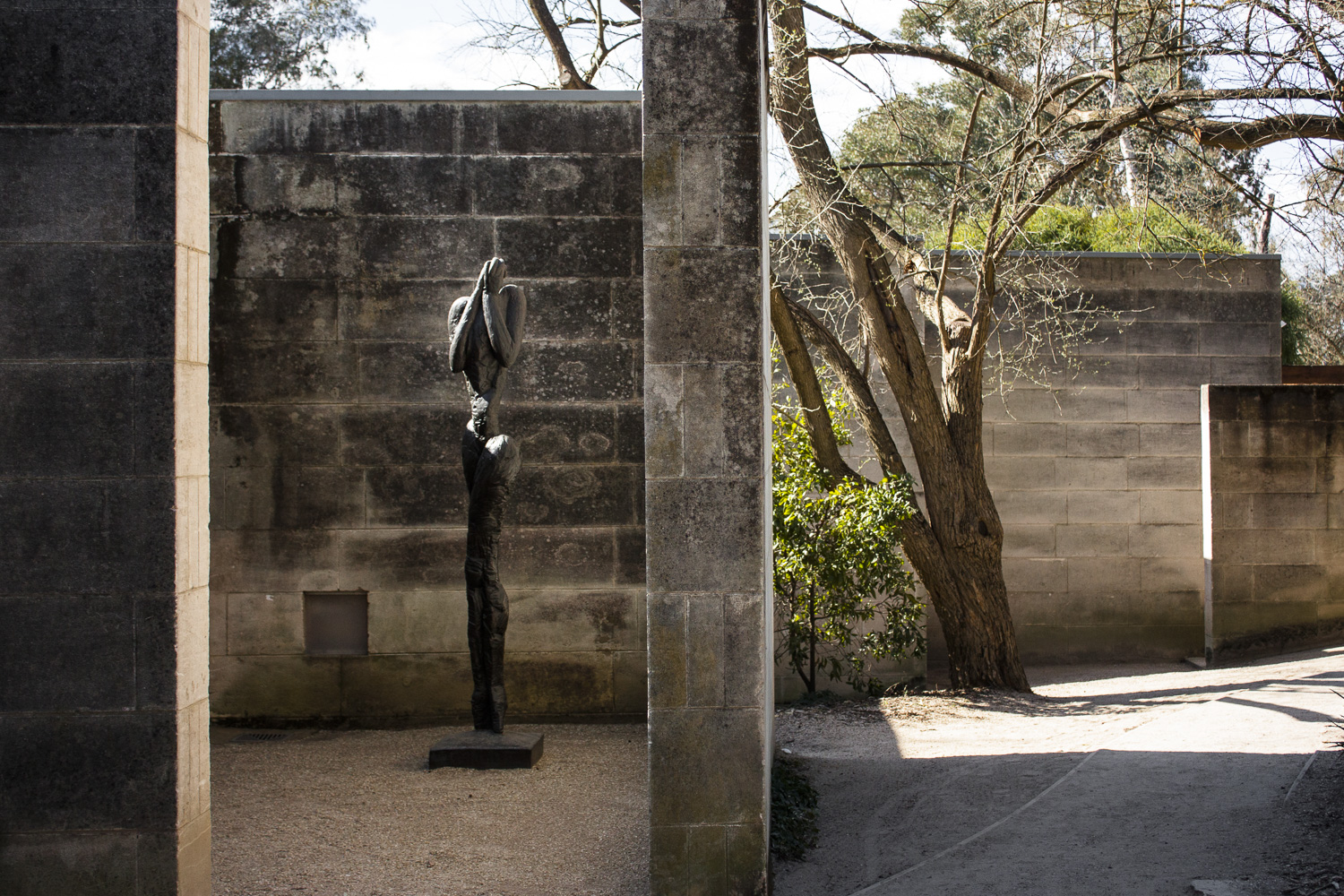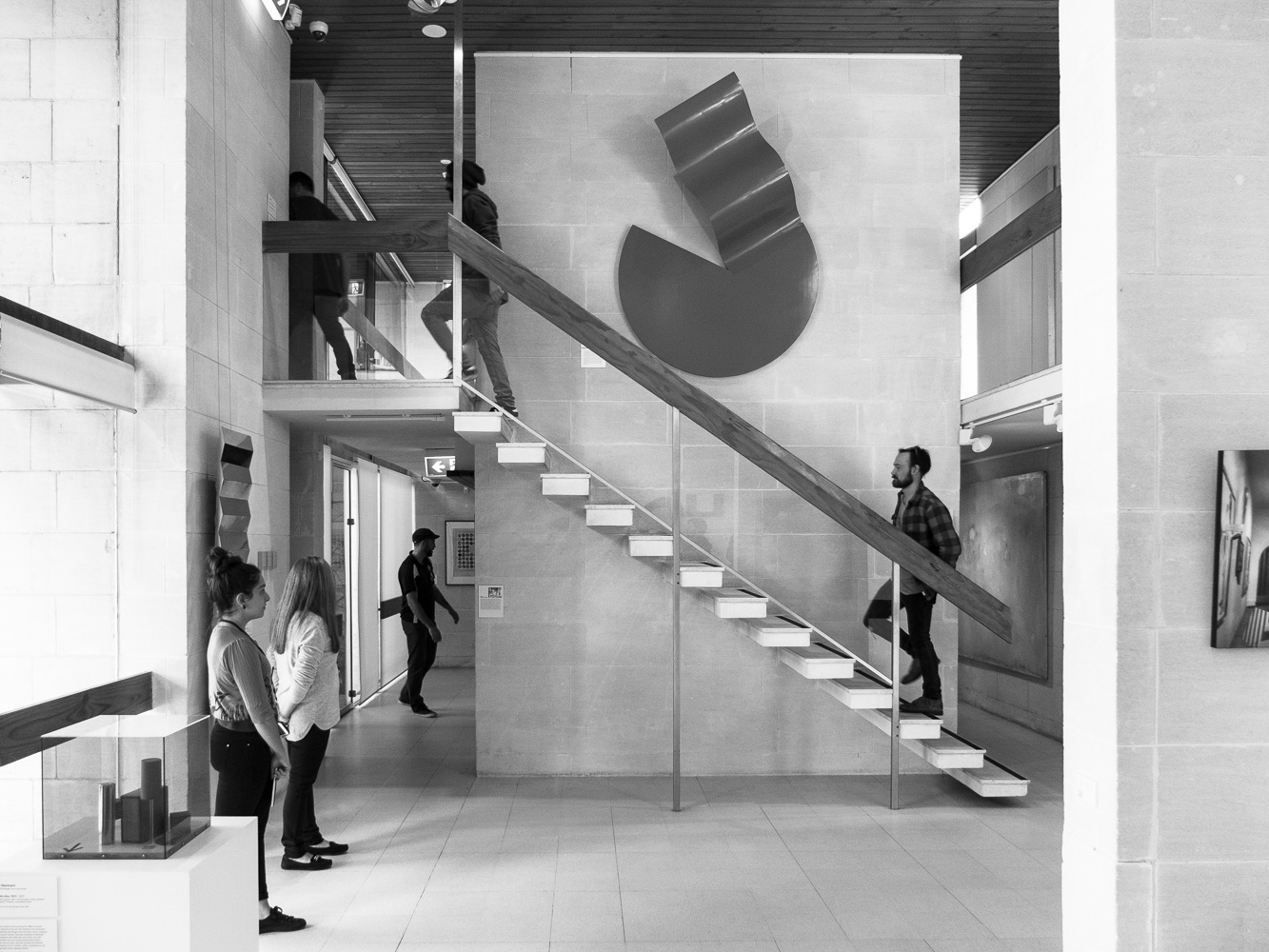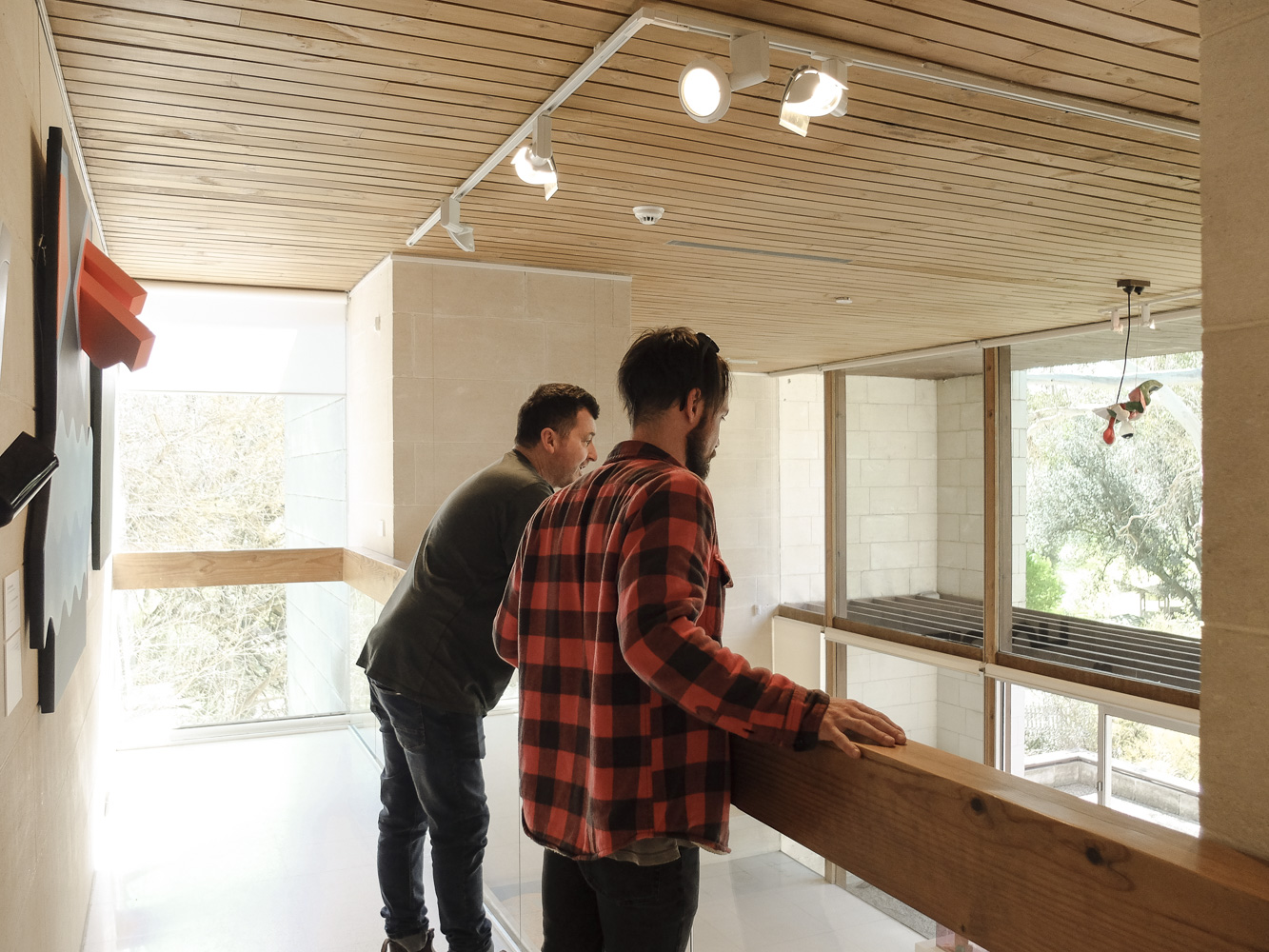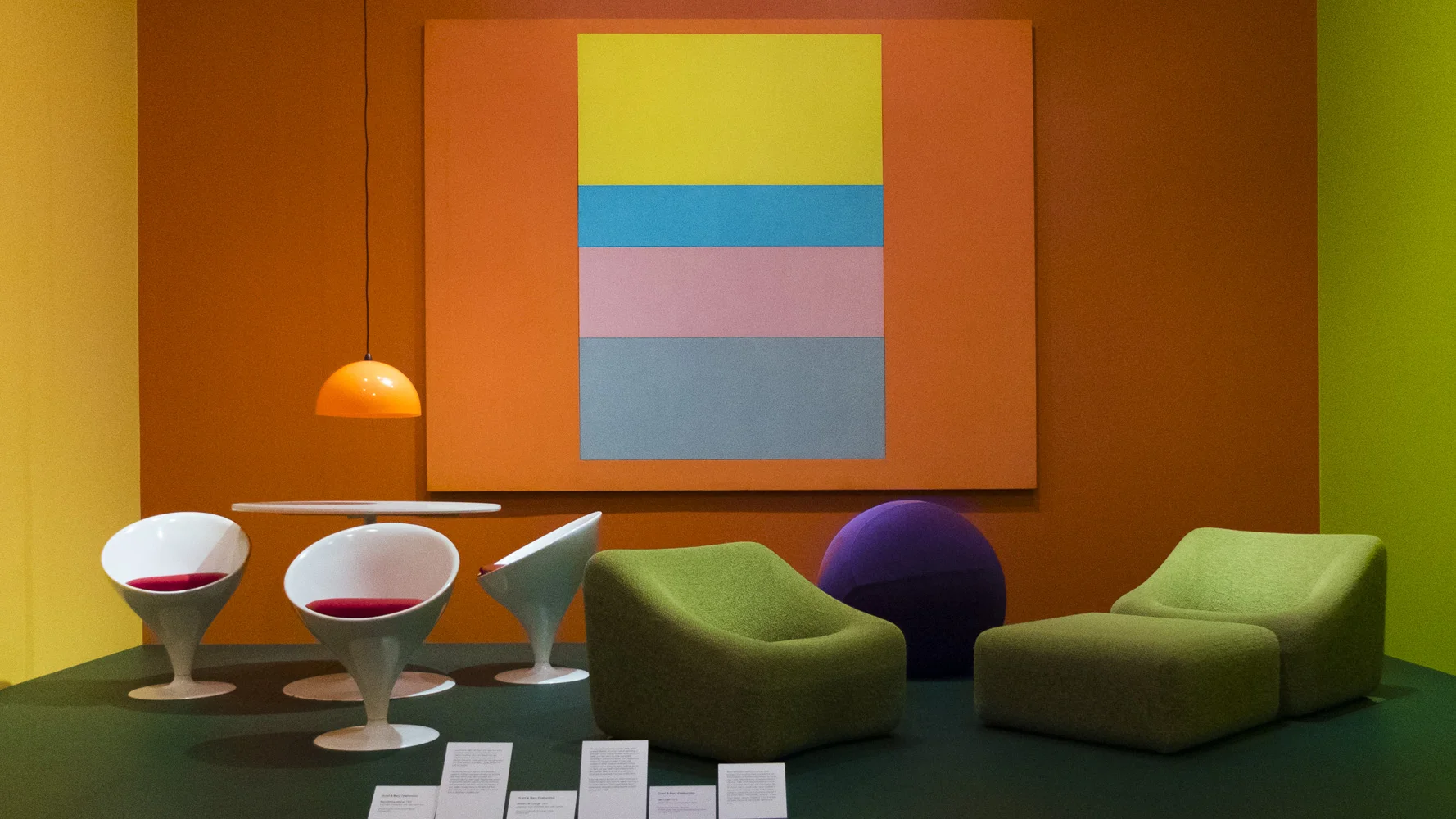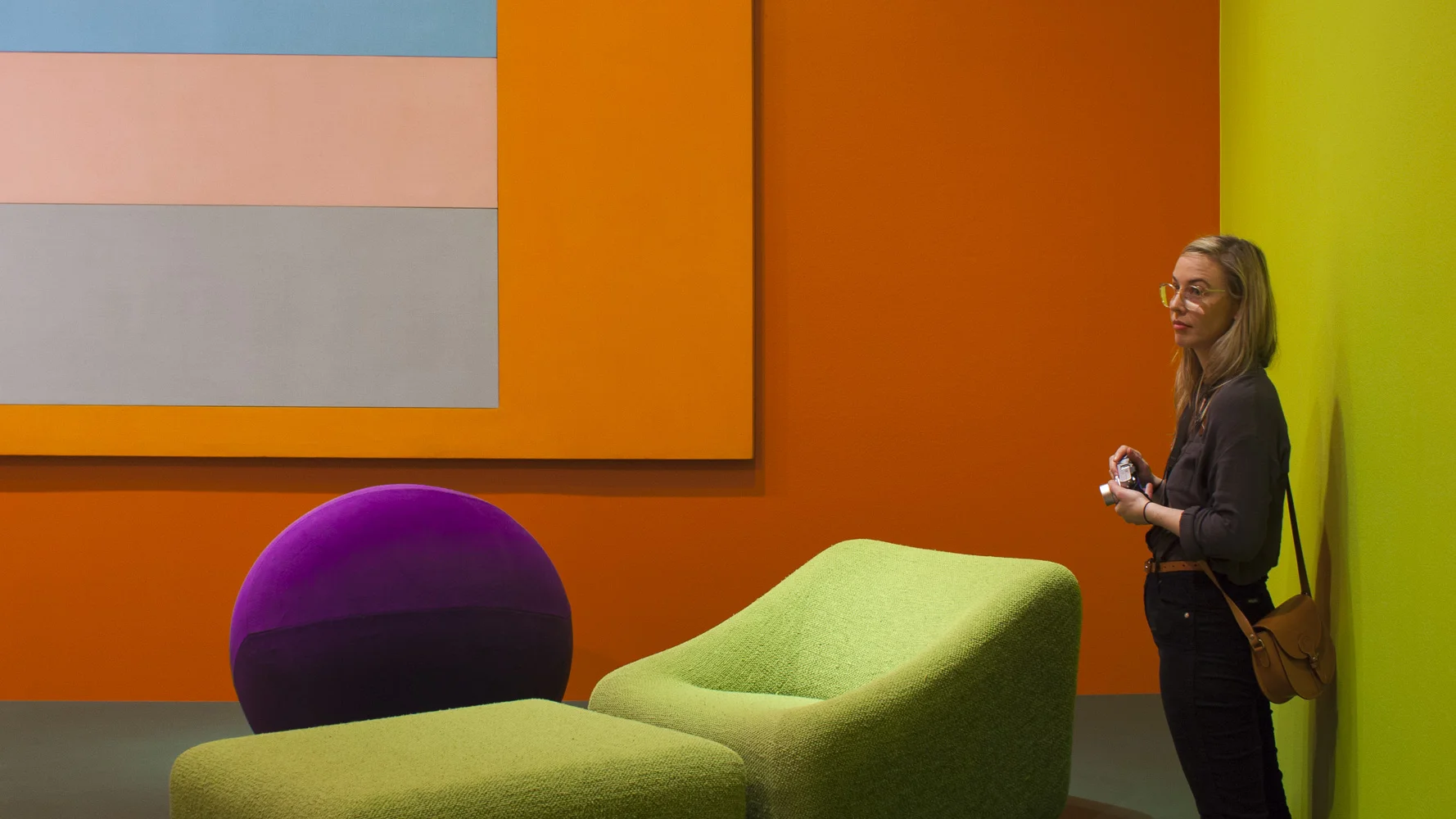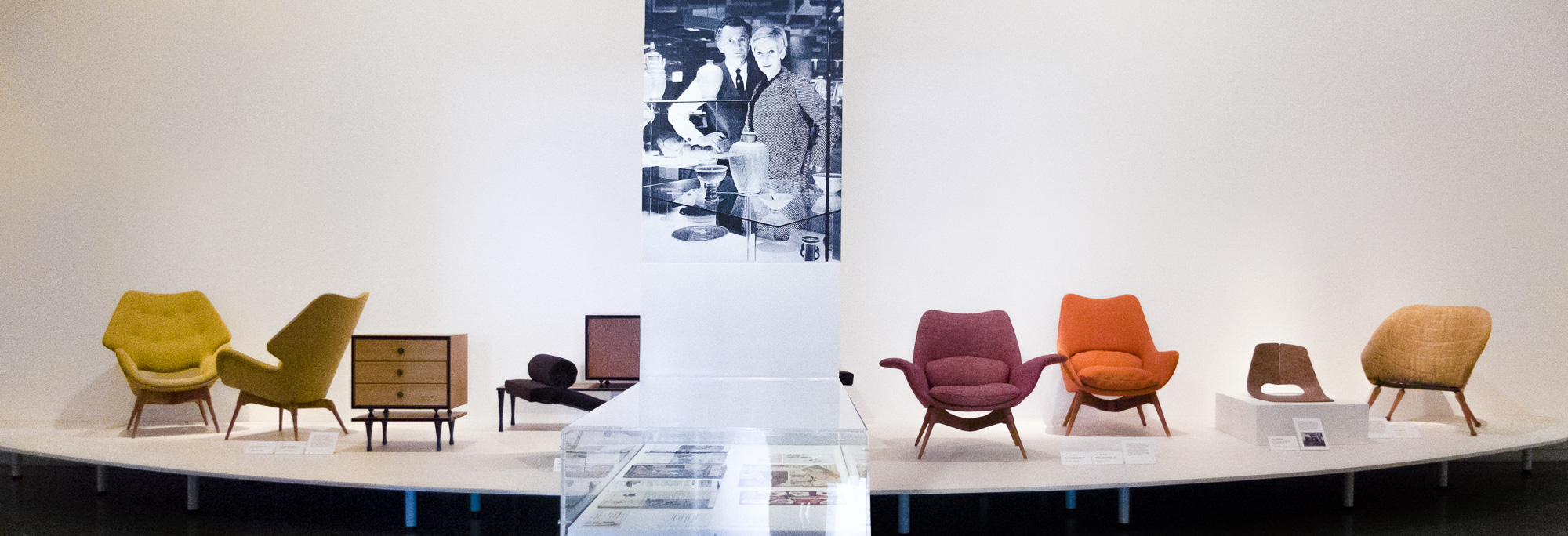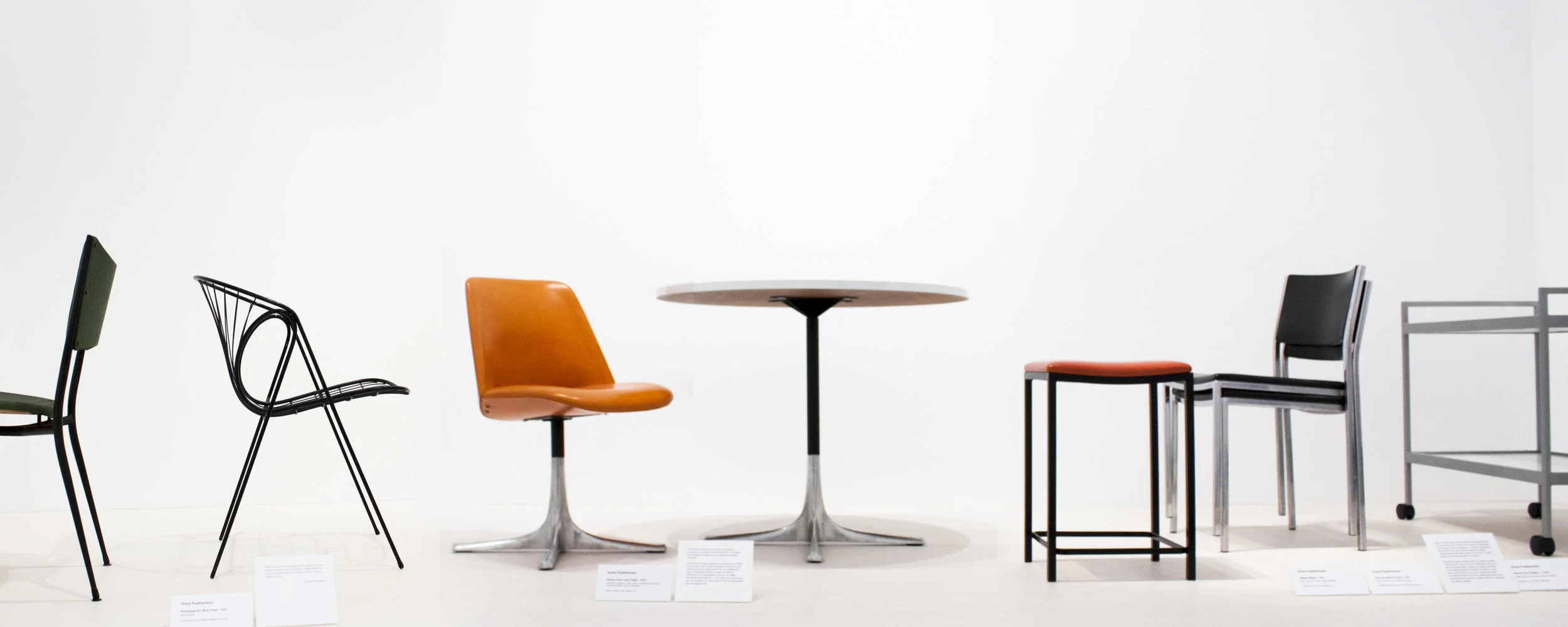Featherston — Design for Life
Featherston - Design for Life
What makes an Aussie design classic?
Join the Cantilever Interiors team on a field trip to the Heide Museum of Modern Art, as they tour the influential works of Grant and Mary Featherston.
Grant & Mary Featherston
With its rolling hills, striking art and moving architecture, Heide provides a picture-perfect setting for an exhibition on Featherston, a name synonymous with modernist Australian design.
In keeping with their love of local craft and fine design, directors Travis Dean and Charlie Wilde recently invited the entire Cantilever Interiors team of skilled makers on a staff excursion to Heide, for a closer look at some of the most iconic furniture of the Mid Century.
The vivid ‘Plastic & Pop’ display features Featherson’s exploration of advanced plastic technology in the 1960s and 70s. L - R: Stem Dining Setting, Obo Chair and Numero IV lounge.
The Cantilever team exploring the innovative design process behind the early Featherston collection: ‘Contour chair’ was made with minimal material employing new methods in flexible plywood for its core structure.
A collection of objects and imagery curated by Mary Featherson with Vicky Featherston Tu mapping Mary and Grants fascination for nature which inspire their design
“Featherston is not like the mainstream,” says Charlie. “I grew up with that furniture around. It was a little bit self-conscious and idiosyncratic for the time, and I think even today, still looks pretty wild.”
Being former furniture makers themselves, both Travis and Charlie have a hands-on appreciation for Featherston’s work. In fact, one of Travis’ previous jobs included producing Contour chairs for a licenced Featherston manufacturer in Collingwood.
“I’d actually forgotten all about it until the Featherston show came up and I thought, ‘oh! I remember making those chairs!’” says Travis. “It was quite interesting to come here and look at the patterns, and remember the process.”
Cantilever’s workshop manager, Brendan and Directors Travis and Charlie share a collective wealth in furniture making. Here they explore Featherston prototype and concept sketches, enjoying a rare insight into process.
Iconic pieces we still know and love today.
Moving through the Heide’s comprehensive collection of Featherston pieces, complete with original promotional material, prototypes and expressive hand sketches from the designer himself, provides a fascinating look at how the furniture progressed in parallel with the technology of the day, from simple timber frames to later experimentation with more complex production methods and mediums.
“I like that notion of the DIY Australian ethos,” says Charlie. “The approach of just doing it themselves in the back shed, almost, at the beginning. That’s what I find inspirational about Featherston. And I always liked his steel stuff the best, the work he did with Aristoc. It’s the complexity of all those tapered legs, the industrial process and framework you have to build them with.”
“He would have done a lot of it himself at the start, but joining up with Aristoc seemed to give Featherston more of a connection with all the skilled trades,” says Travis. “In some ways, that’s sort of similar to what we do, working with all sorts of different trades: stonemasons, steel, painting and polishing people, hardware companies – it’s very much a collaborative process to pull together our products.”
In his time with Aristoc, Featherston design a body of work using industrial processes. The designs are neutral, elegantly utilitarian and mass production. Mitzi Chalr (far left) sold over 200,000 units, the highest production of Australian Chairs.
Location
Heide Museum of Modern Art
Exhibition
Design for Life: Grant and Mary Featherston
30 June 7 -October 2018
“Featherston surrounded himself with people who knew what they were doing,” says Charlie. “And I think all great designers are like that – able to draw people together, with different expertise, to make something good.”
Following the tour, the Cantilever group proceeded into the timeless austerity of Heide II, John and Sunday Reed’s second home on site, designed by architect David McGlashan in the mid-1960s. Here too, for a team so attuned to precision craftsmanship, inspiration abounds.
“It’s the open plan, windows and the light. I love the natural finishes, the timber and the sandstone feels so comfortable,” says Travis. “And the details. I always think about a desk in the study. The desk benchtop is held off the window by about 100mm – it’s cleverly built into the space. Little details like that always stand out every time I walk through it. It’s just a really resolved piece of architecture, on a lot of levels.”
As Heide II ages gracefully within the lush landscape, it continues to demonstrate the enduring appeal of a restrained material palette, as well as the impact of considered design. And a commitment to detail that the Cantilever team strive for every day in the workshop.
